#heterobranchia
Explore tagged Tumblr posts
Text

Caldukia
“Caldukia rubiginosa, a proctonotid nudibranch. Porirua, New Zealand.” - via Wikimedia Commons
#wikipedia#wikipedia pictures#animals#nature#wikimedia commons#Caldukia rubiginosa#c. rubiginosa#sea slug#molluska#gastropoda#heterobranchia#euthyneura#nudipleura#nudibranchia#nudibranch#dexiarchia#cladobranchia#proctonotidae#caldukia#marine life#marine animals#marine aesthetic#gastropods#mollusk#ocean aesthetic#oceancore#ocean life#ocean animals#sea life#marine biology
202 notes
·
View notes
Text
Uncharismatic Fact of the Day
Just because it looks like a worm, and crawls like a worm, doesn't mean it's a worm-- sometimes it's a worm slug! These gastropods are named for their strong resemblance to common worms; in particular their long, thin bodies and pink coloration. Also like worms, worm slugs are most commonly found underground, consuming bits of soil, detritus, or worm feces as they tunnel along.

(Image: A worm slug (Boettgerilla pallens) by Jozef Grego)
If you like what I do, consider buying me a ko-fi!
#worm slug#Heterobranchia#Boettgerillidae#slugs#heterobranchs#gastropods#mollusks#invertebrates#uncharismatic facts
156 notes
·
View notes
Photo

Variable Neon Slug
#variable neon slug#Nembrotha kubaryana#Gastropoda#Heterobranchia#Euthyneura#Nudipleura#Nudibranchia#Euctenidiacea#Doridacea#Polyceroidea#Polyceridae#Nembrothinae#Nembrotha#nudibranch#sea slug#dorid nudibranch#upl
738 notes
·
View notes
Text


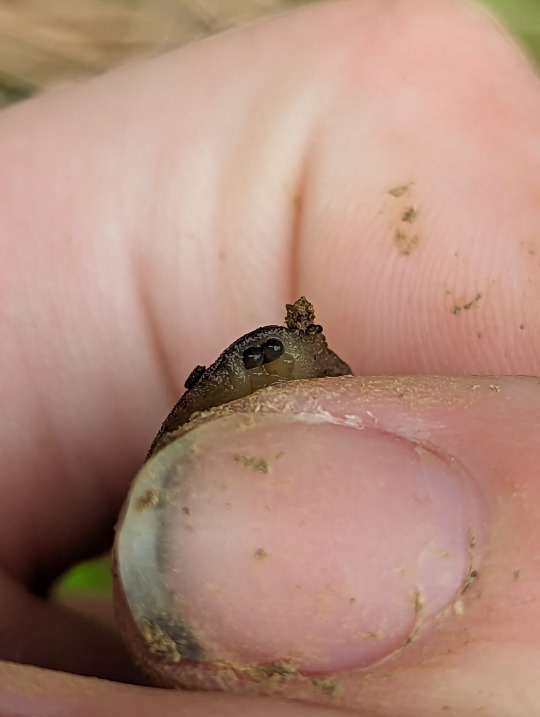
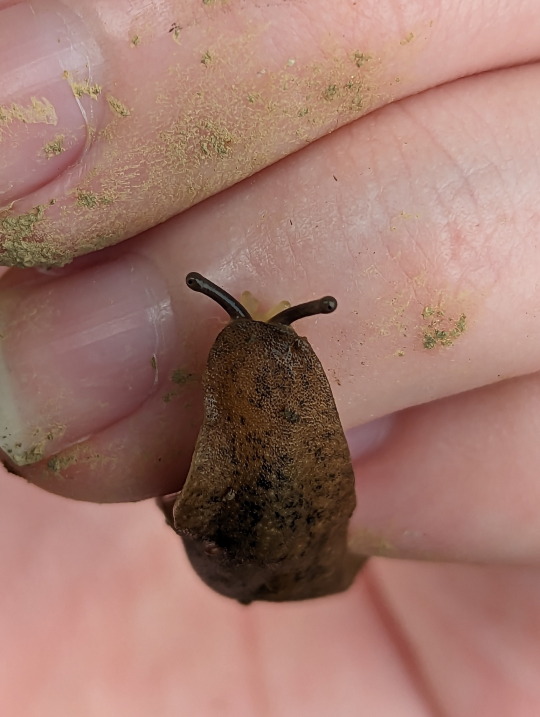
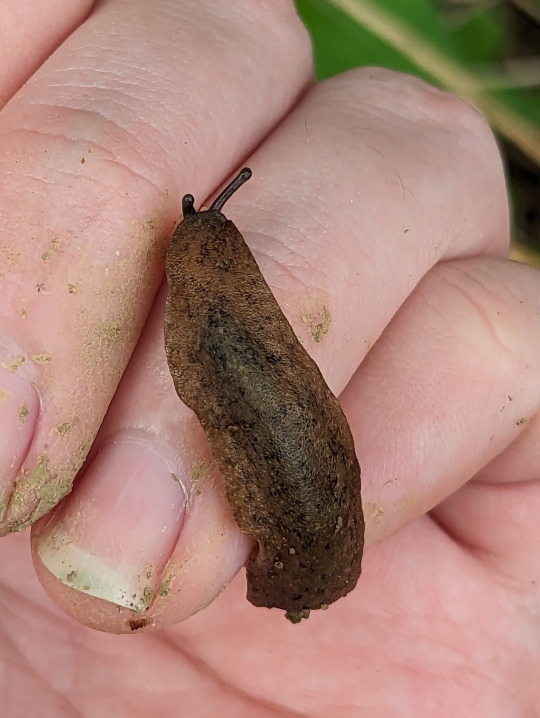


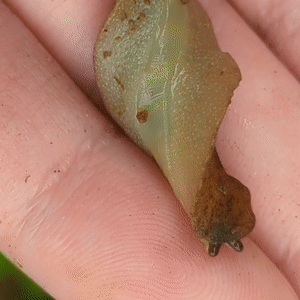
Caribbean Leatherleaf Slug.
30/07/23 - Gastropoda: Sarasinula plebeia
QLD:WET - El Arish, remnant vegetation on farmland
#invertblr#invertebrates#Sarasinula plebeia#Caribbean Leatherleaf Slug#Veronicellidae#Leatherleaf Slugs#Heterobranchs#Heterobranchia#Gastropoda#Gastropods#Mollusca#molluscs#mollusks#slugs#slugblr
362 notes
·
View notes
Text

#Flabellinopsis iodinea#Flabellinopsis#Flabellinopsidae#Cladobranchia#Nudibranchia#Heterobranchia#Gastropoda#Mollusca#spanish shawl#aeolid nudibranch#nudibranch#sea slug#mollusk#marine gastropod#gastropod#animal#nature#wildlife#creative commons#monterey bay
13 notes
·
View notes
Text

#Arion ater#Arionidae#Gastropoda#Mollusca#Stylommatophora#Eupulmonata#Panpulmonata#Euthyneura#Heterobranchia#Animalia#gif#disapproving
0 notes
Text

Cornu aspersum eggs
19-DEC-2022
Melbourne, Vic
#australia#victoria#melbourne#snail eggs#sneggs#forbidden boba pearls#garden snail#mollusc#gastropod#helix aspera#cryptomphalus aspersus#mollusca#gastropoda#heterobranchia#stylommatophora#helicidae#helicinae#thebini#cornu#cornu aspersum
1 note
·
View note
Text
Round 2 - Mollusca - Gastropoda
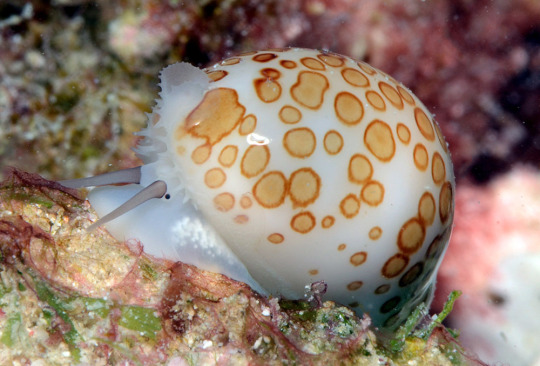
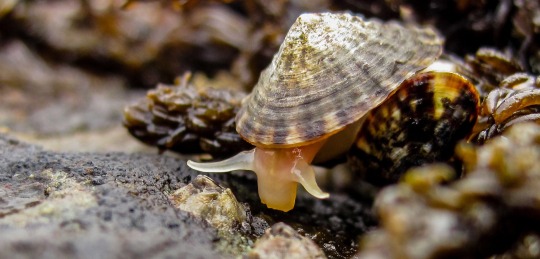
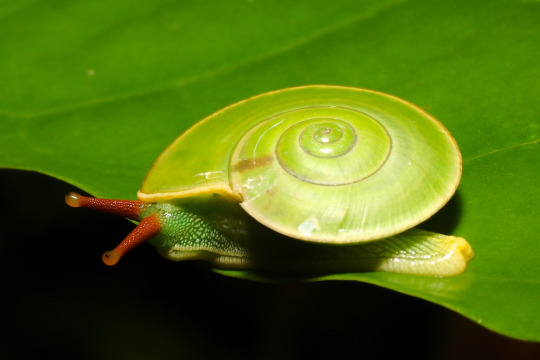
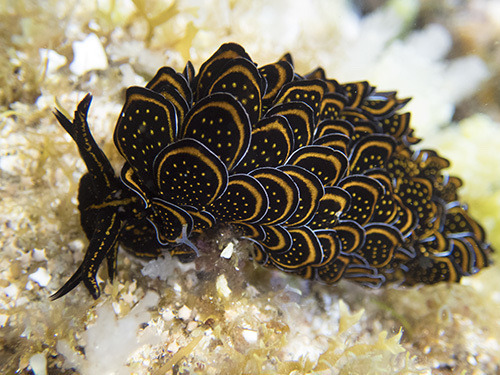
(Sources - 1, 2, 3, 4)
The class Gastropoda is the most diverse and successful class of molluscs, living in most habitats in saltwater, freshwater, and on land. They are one of the largest classes of animals, second only to insects. Members of this class either have an external or internal shell, or have lost their shell secondarily. Gastropoda includes the snail clades Sorbeoconcha, Hypsogastropoda, Architaenioglossa, and Neogastropoda, the snails and slugs of the clades Heterobranchia, the snails, slugs, and limpets of the clade Neritimorpha, the deepwater limpet clade Neomphaliones, the “true limpet” clade Patellogastropoda, and the primitive snails and limpets of the clade Vetigastropoda.
The anatomy, behavior, feeding, and reproductive adaptations of gastropods vary significantly from one clade to another, so it’s hard to make a general summary. As you can probably tell above, the terms snail, slug, and limpet are not taxonomic, but moreso descriptive! The word “snail” is generally used for gastropods with an external shell big enough for the body to withdraw completely inside. Marine snails tend to have many names based on their shell shape, such as abalone, conch, periwinkle, whelk, and cowrie. “Limpets” are generally considered to be marine snails with a simple, conical, flattened shell. “Slugs” are snails that have no shell or a very small, internal shell, while “semislugs” are snails that have a shell that they can partially retreat into but not entirely. These groups are all paraphyletic, as some slugs are closer related to shelled snails than they are to other slugs and vice versa. Shells have evolved and been lost within the many different gastropod lineages. These species are wildly diverse, living from the depths of hydrothermal vents to dry deserts to inside other organisms as parasites.
Gastropods are distinguished by an anatomical process known as torsion, where the visceral mass of the animal rotates 180° to one side during development, such that the anus is situated more or less above the head. The gill-combs, the olfactory organs, the foot slime-gland, nephridia, and the auricle of the heart are single or at least are more developed on one side of the body than the other. Torsion is present in all gastropods, but the opisthobranch gastropods are secondarily untorted. Gastropods typically have a well-defined head with two or four sensory tentacles with eyes, and a ventral foot. Gastropod eyes range from simple ocelli that only distinguish light and dark, to more complex pit eyes, and even to lens eyes. Most shelled gastropods have a one piece shell (though there are some bivalved gastropods), typically coiled or spiraled, at least in the larval stage. This coiled shell usually opens on the right-hand side. Many species have an operculum, which acts as a trapdoor to close the shell. Like most molluscs, they have a rasping, toothed tongue called a radula. Gastropods can be herbivores, detritus feeders, predatory carnivores, scavengers, or parasites.
Some gastropods have seperate sexes while some are hermaphroditic. Many undergo elaborate courtship rituals before mating. Some utilize unique calcareous or chitinous “love darts” in courtship, which are coated in allohormones that enable their partner to receive and store more sperm. Gastropods will lay eggs which hatch into larvae, some of which are planktonic trochophore or veliger larvae. A newly hatched snail is called a neonate, and their larval shell is called a protoconch.
The fossil record of gastropods dates back to the Late Cambrian, with Chippewaella and Strepsodiscus, though these may be stem-gastropods as their only gastropod characteristic is a coiled shell. Crown-gastropods arrived and began to diversify in the Ordovician, though they were still less common than bivalves. By the Mesozoic, the ancestors of many of our modern living gastropods had evolved. Most ancient gastropods were marine, with some land snails appearing in the Carboniferous, but not becoming common or diverse until the Cretaceous.

Propaganda under the cut (warning: gif heavy!)
Gastropod shells make up many of the “seashells” washed ashore after the animal dies, and are created by the animal via secretions of chitin and conchiolin from its mantle edge. Unfortunately, many species are also endangered or extinct in the wild due to overcollection of live gastropods to be killed for their meat or “collectable” shells, as well as due to habitat destruction, pollution, and climate change.
The Rough Keyhole Limpet (Diodora aspera) has a symbiotic relationship with the Scale Worm Copepod (Anthessius nortoni). The limpet provides host for the copepod, which in turn bites predatory starfish to discourage them from eating the limpet.
The largest gastropod is the Australian Trumpet (Syrinx aruanus), a sea snail that can measure up to 75 cm (2 ft 5.5in) long and weigh up to 18 kg (40 lb)! While the animal’s shell is well-known and valued by collectors, it is rarely seen alive.
“Micromolluscs” are numerous species of gastropod with adult shell lengths of around 600 μm. You could say this is no bigger than a grain of sand, and you would be right, as many of their washed up shells are sand. Not much is known about these species and many remain unclassified as their minute size makes them very challenging to study.
Members of the family Conidae, known as “cone snails”, are some of the most venomous animals on earth. They use a modified radula tooth like a dart or harpoon to attack and paralyze their prey. Their beautifully patterened shells lead to humans sometimes trying to pick them up, resulting in the snail using this tooth in defense. The harpoons of some of the larger species of cone snail can even penetrate gloves or wetsuits. Symptoms of a more serious cone snail sting include severe localized pain, swelling, numbness and tingling, and vomiting. Symptoms can start immediately or can be delayed for days. Severe cases involve muscle paralysis and changes in vision and respiratory failure that can lead to death. Cone snail venoms are mainly peptide-based, and contain many different toxins that vary in their effects. Cone snail venom is under study for its use in the medical field, as it works quickly and precisely. Many of the compounds target only a particular class of receptor. This means that they can reliably and quickly produce a particular effect on the body's systems without side effects; for example, almost instantly reducing heart rate or turning off the signaling of a single class of nerve, such as pain receptors. Ziconotide, a pain reliever 1,000 times as powerful as morphine, was initially isolated from the venom of the Magician Cone Snail (Conus magus). It was approved by the U.S. Food and Drug Administration in December 2004 under the name Prialt. Other drugs based on cone snail venom targeting Alzheimer's disease, Parkinson's disease, depression, and epilepsy are in clinical or preclinical trials.
Sea slugs:





#gif heavy after the cut#why are they all from stim blogs btw#also sorry I had to copy paste a lot of this from wikipedia I hve a migraine rn 😔#round 2#mollusca#animal polls#gastropoda
91 notes
·
View notes
Text
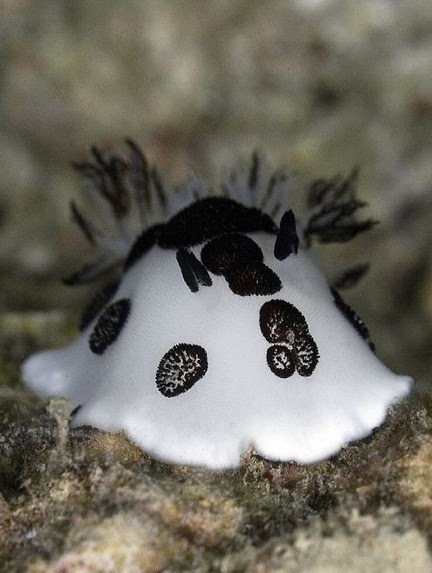
Морские зайцы (моллюски) — род брюхоногих моллюсков из семейства Aplysiidae подкласса Heterobranchia http://dlvr.it/T5GJG4
28 notes
·
View notes
Text

Gasflame nudibranch
#gasflame nudibranch#wikipedia#wikipedia pictures#nature#animals#wikimedia commons#Bonisa nakaza#b. nakaza#heterobranchia#euthyneura#nudipleura#nudibranchia#dexiarchia#cladobranchia#nudibranch#Proctonotidae#sea slug#mollusk#gastropods#gastropoda#marine animals#sea animals#ocean animals#ocean aesthetic#oceancore#marine aesthetic#sea creatures#ocean creatures#marine creatures#marine biology
104 notes
·
View notes
Text
youtube
Powelliphanta is a genus of large, air-breathing land snails. A Scientific name: Powelliphanta Rank: Genus Higher classification: Rhytididae Phylum: Mollusca Order: Stylommatophora Subclass: Heterobranchia
1 note
·
View note
Text

Glossodoris cincta
#Glossodoris cincta#sea slug#nudibranch#Gastropoda#Heterobranchia#Nudibranchia#Doridina#Doridoidea#Chromodorididae#Glossodoris#upl
156 notes
·
View notes
Photo

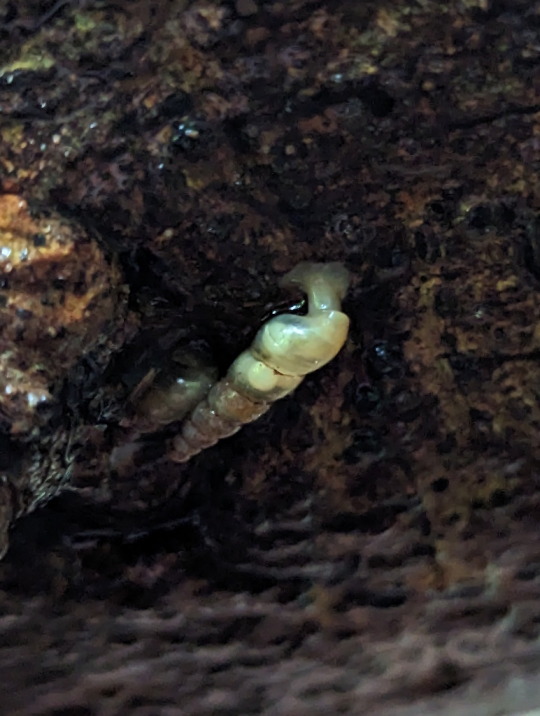

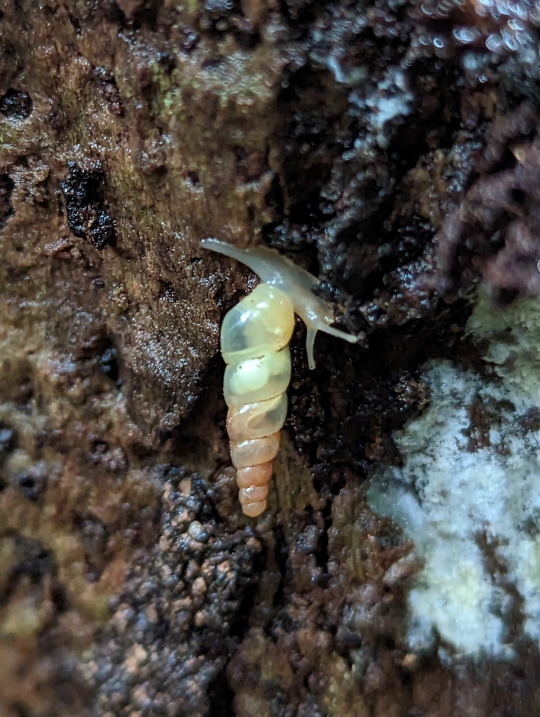
Miniature Awlsnail Out and About
Subulina octona
23/02/23
#Subulina octona#Miniature Awlsnail#Stylommatophora#Heterobranchia#Gastropoda#gastropods#gastropod#mollusks#mollusk#molluscs#mollusc#Mollusca#invertblr#invertebrates
643 notes
·
View notes
Text
A combined phylogenetic strategy illuminates the evolution of Goniodorididae nudibranchs (Mollusca, Gastropoda, Heterobranchia)
Pubmed: http://dlvr.it/T05JVg
0 notes
Photo

Rose petal bubble snail (Hydatina physis)
Photo by Rafi Amar
#rose petal bubble snail#striped paper bubble snail#bubble snail#hydatina physis#hydatina#aplustridae#acteonoidea#heterobranchia#gastropoda#mollusca#lophotrochozoa
3K notes
·
View notes
